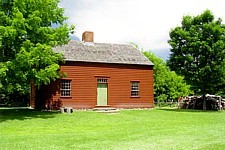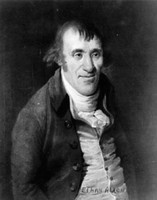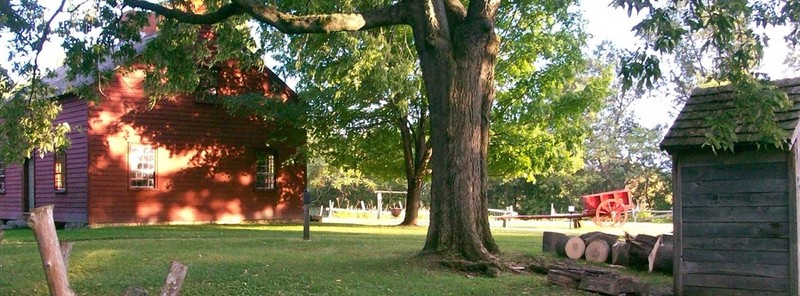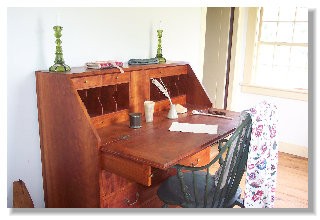Ethan Allen Homestead Museum
Introduction
Text-to-speech Audio
Images
Ethan Allen Homestead

Ethan Allen in later life

Homestead

Homestead interior

Backstory and Context
Text-to-speech Audio
Beginning in 1761, New Hampshire’s Governor Wentworth had issued land grants for the establishment of new settlements in the territory that is now Vermont, New York also claimed the same land.5 What is now Vermont was then referred to as the Hampshire or the Wentworth Grants. Ethan Allen was attracted to the promise of the newly opened lands, several relatives had already moved to the region. Over the winter of 1767-68, Ethan set out as part of a group to hunt and trap in the Grants. Allen eventually hunted away from the group; he befriended Natives who taught him more skills. Allen returned home enthralled by the lands he had visited, particularly the Winooski River area near Lake Champlain. Present day Burlington.6
Allen purchased land in the Grants in 1770. Many of the people who were purchasing land in the Grants were speculating. The settlers who had acquired land with the Wentworth Grants were in danger of losing their land when New York issued competing grants for the same lands. Speculators were not interested in settling; they bought and sold the land to generate wealth through the sale. Settlers, including Ethan Allen purchased their land with the intention of developing it. Ethan Allen organized and led the settlers in resisting New York’s efforts to eject the existing settlers and to resettle with new claimants. Ethan was selected to lead a militia unit named the Green Mountain Boys to that end. The Green Mountain Boys never killed anyone in their efforts, but they did employ many questionable tactics.8
With the outbreak of the American Revolution, Allen and the Grants settlers believed that their best opportunity to attain liberty and secure their lands was to support the Revolution. Most of the Grants settlers supported the ideals expressed by the Revolutionary leaders.9 Allen and the Green Mountain Boys were instrumental in American victories at Fort Ticonderoga and Fort Crown Point. After the victories on Lake Champlain, Allen moved to recruit natives and Canadians for a possible attack of British forces in Montreal. The attack failed and Allen was captured. He was transported to England for trial as a traitor. While in England, he attempted to negotiate with the British as a means to ensure Vermont’s independence from New York. He was released in a prisoner exchange in 1778. Ethan Allen returned to Vermont, but many frowned at his negotiations in England.10
Ethan Allen constructed a farmhouse on his property outside of Burlington in 1787. He and family, including his new wife Fanny Allen, enjoyed their life at the farm. The modest two-story farmhouse measures 24 x 36 feet. In final years Allen worked his farm and wrote extensively. Nine people lived in the house including children, Allen’s free servant Newport, William Stewart- a former Green Mountain Boy, and a women servant. Ethan Allen, accompanied by Newport, crossed frozen Lake Champlain in order to acquire hay from one of Allen’s relatives on South Hero Island. On the return trip, Allen fell unconscious, he died the next day February 12, 1789 at home with his family.11
The Ethan Allen Homestead Museum includes a recreated colonial tavern and many of Ethan Allen’s writings. Museum personnel enact many of the chores that have been required to maintain an 18th century farm. Visitors are introduced to the intricacies surrounding the land grant claims. Museum visitors learn about the homestead’s archaeology, and history through a walking tour.